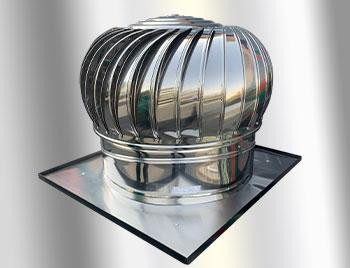The Ultimate Guide to Air Exhaust Ventilators: Enhancing Indoor Air Quality
In today's era of increasing environmental concerns and emphasis on indoor air quality, air exhaust ventilators play a crucial role in maintaining a healthy and comfortable environment. These innovative devices are designed to remove stale air, pollutants, and excess moisture from enclosed spaces, thereby promoting better ventilation and improving overall indoor air quality.
Understanding Air Exhaust Ventilators
Air exhaust ventilators, also known as exhaust fans or ventilation systems, are mechanical devices installed in buildings to facilitate the exchange of indoor and outdoor air. They work by expelling stale or contaminated air from the interior of a building to the outside, allowing fresh air to enter and circulate. These ventilators come in various forms, including roof-mounted ventilators, wall-mounted fans, and ducted exhaust systems, each tailored to specific building requirements and ventilation needs.
Enhancing Indoor Air Quality
Indoor air quality (IAQ) is a critical factor that significantly impacts the health, comfort, and well-being of building occupants. Poor IAQ can lead to various health issues, including respiratory problems, allergies, and fatigue. Air exhaust ventilators play a vital role in improving IAQ by effectively removing pollutants such as airborne particles, volatile organic compounds (VOCs), and excess humidity from indoor spaces. By expelling these contaminants, ventilators help prevent the buildup of harmful pollutants and maintain a clean and healthy indoor environment.
Benefits of Air Exhaust Ventilators
There are several benefits associated with the use of air exhaust ventilators:
- Improved Ventilation: Air exhaust ventilators promote better airflow and ventilation, ensuring the continuous exchange of indoor and outdoor air.
- Odor Control: Ventilators help eliminate unpleasant odors by removing stagnant air and introducing fresh outdoor air into the building.
- Moisture Removal: Excess moisture can lead to mold growth and structural damage. Air exhaust ventilators help reduce humidity levels, thereby mitigating the risk of mold and moisture-related issues.
- Energy Efficiency: Modern air exhaust ventilators are designed to operate efficiently, consuming minimal energy while effectively ventilating indoor spaces.
- Health and Comfort: By removing pollutants and maintaining optimal indoor air quality, ventilators contribute to the health, comfort, and well-being of building occupants.
Choosing the Right Ventilation Solution
When selecting air exhaust ventilators for a building, several factors should be considered, including the size of the space, ventilation requirements, and environmental conditions. It's essential to choose high-quality ventilators that are suitable for the specific application and meet industry standards for performance and efficiency.
Conclusion
Air exhaust ventilators play a crucial role in maintaining a healthy and comfortable indoor environment by promoting proper ventilation and improving indoor air quality. By effectively removing pollutants, odors, and excess moisture, these innovative devices contribute to the overall well-being of building occupants. Investing in quality air exhaust ventilators is essential for ensuring optimal ventilation and creating a safer and more enjoyable indoor space.


Comments
Post a Comment